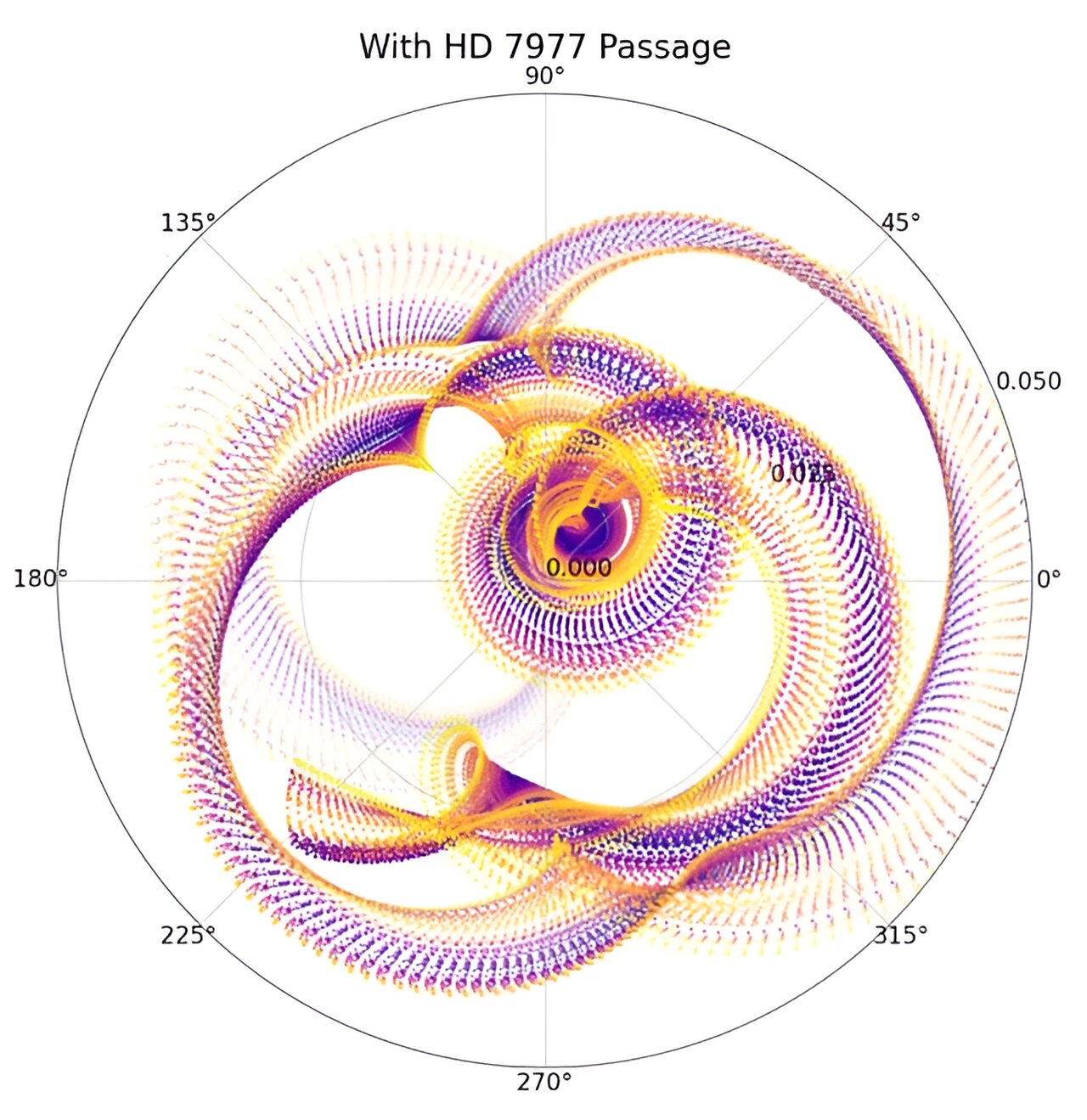Scientists have found that throughout the evolution of the Solar System, the Earth’s orbit has changed. However, this is explained not only by the influence of large planets, but also by the close passes of stars. Accordingly, the climate of our planet could change.

Evolution of the Earth’s orbit
The Earth’s orbit is an ellipse with a certain eccentricity, perihelion and aphelion. But it wasn’t always like that. And recently, researchers from various European scientific institutions have suggested that the approach of the Sun to other stars could be involved in this. An article about this was published in The Astrophysical Journal Letters.
In general, scientists have known for a long time that the orbits of the planets of the solar system do not remain unchanged for hundreds of millions of years. The main factor in this process is their gravitational interaction. Jupiter and other giant planets have a particularly strong influence on the Earth’s orbit.
This effect is relatively small, but even small changes in the eccentricity of the orbit can significantly affect the climate on our planet. This happens by rather complex mechanisms, but still the impact of such long-term changes on the conditions on our planet is recorded quite clearly.
For example, 56 million years ago, the Earth had a very smooth and warm climate. The temperature on it was 5-8 degrees higher than the modern one. This was the so-called Paleocene-Eocene maximum, and scientists have long assumed that its cause could be an increase in the eccentricity of our planet’s orbit.
The most important thing about all these changes in the orbit under the influence of gravity of other planets is that scientists can predict them more or less accurately. Of course, the longer the time interval, the more significant the inaccuracies, but in general, the past evolution of our star system is more or less understandable to astronomers.
Close passes of stars
The approach of the Sun to other stars is also a fairly natural process. All the luminaries of our Galaxy orbit around its center in slightly different orbits. Therefore, the vectors of their movement intersect from time to time. This happens very rarely by the standards of human history, but on a regular basis on the scale of the existence of the Solar System.
It is known that stars come closer to us every few tens of thousands of years, closer than 50 thousand AU, and every 20 million years another luminary comes closer to us than 20 thousand AU. And when the gravitational influence of these approaches is superimposed on disturbances from the action of large planets, it can seriously affect the evolution of the Earth’s orbit.
More precisely, the passage of a star directly affects the Earth’s orbit rather weakly. But the giant planets feel it well and change their orbits. And this already has significant consequences. Presumably, one such event occurred about 2.8 million years ago.
Then the star HD 7977 passed at a distance of 4,000 au to 31,000 au from the Sun. According to the researchers, this had a huge impact on our planet, which is now impossible to calculate.
According to phys.org
Follow us on Twitter to get the most interesting space news in time
https://twitter.comne/ust_magazine


